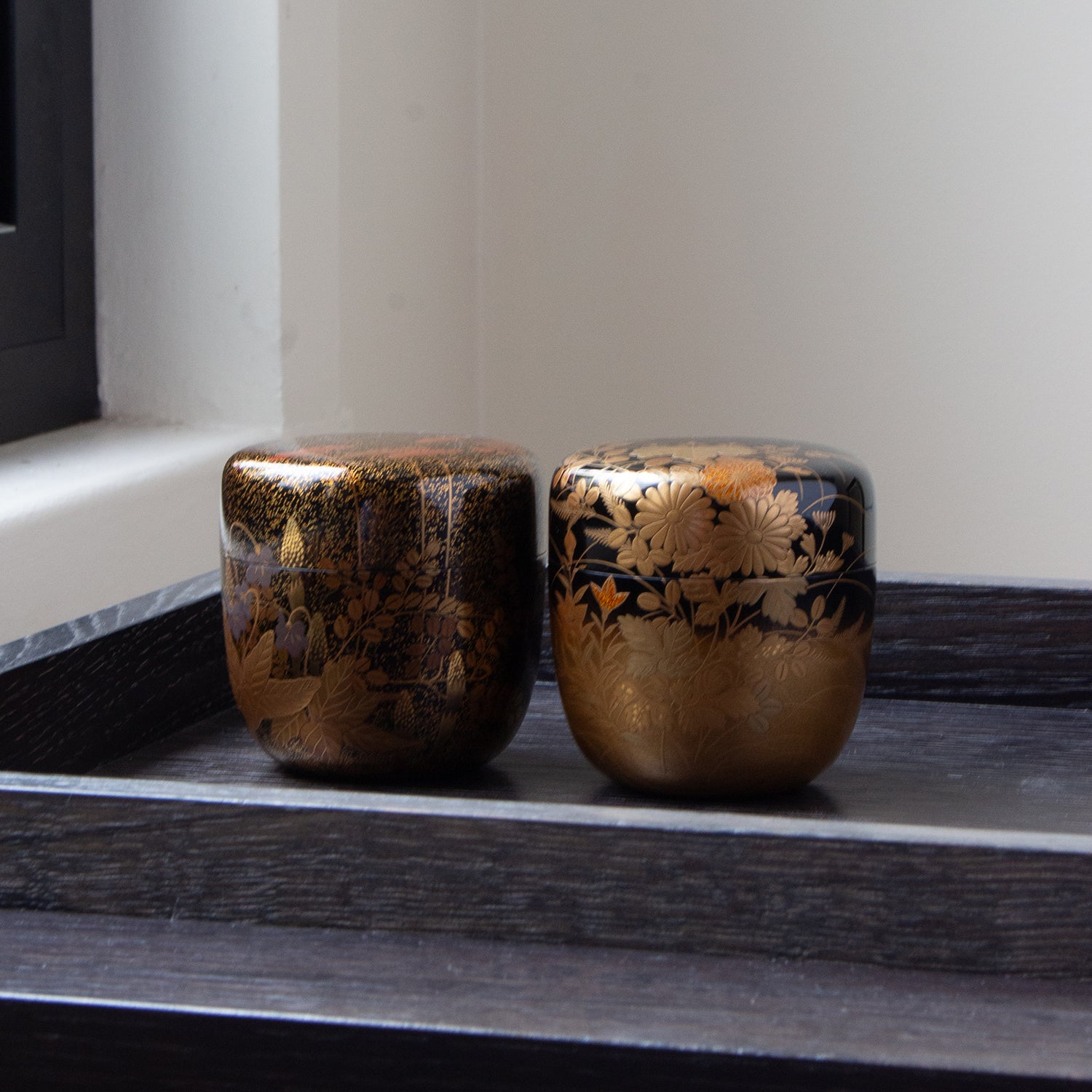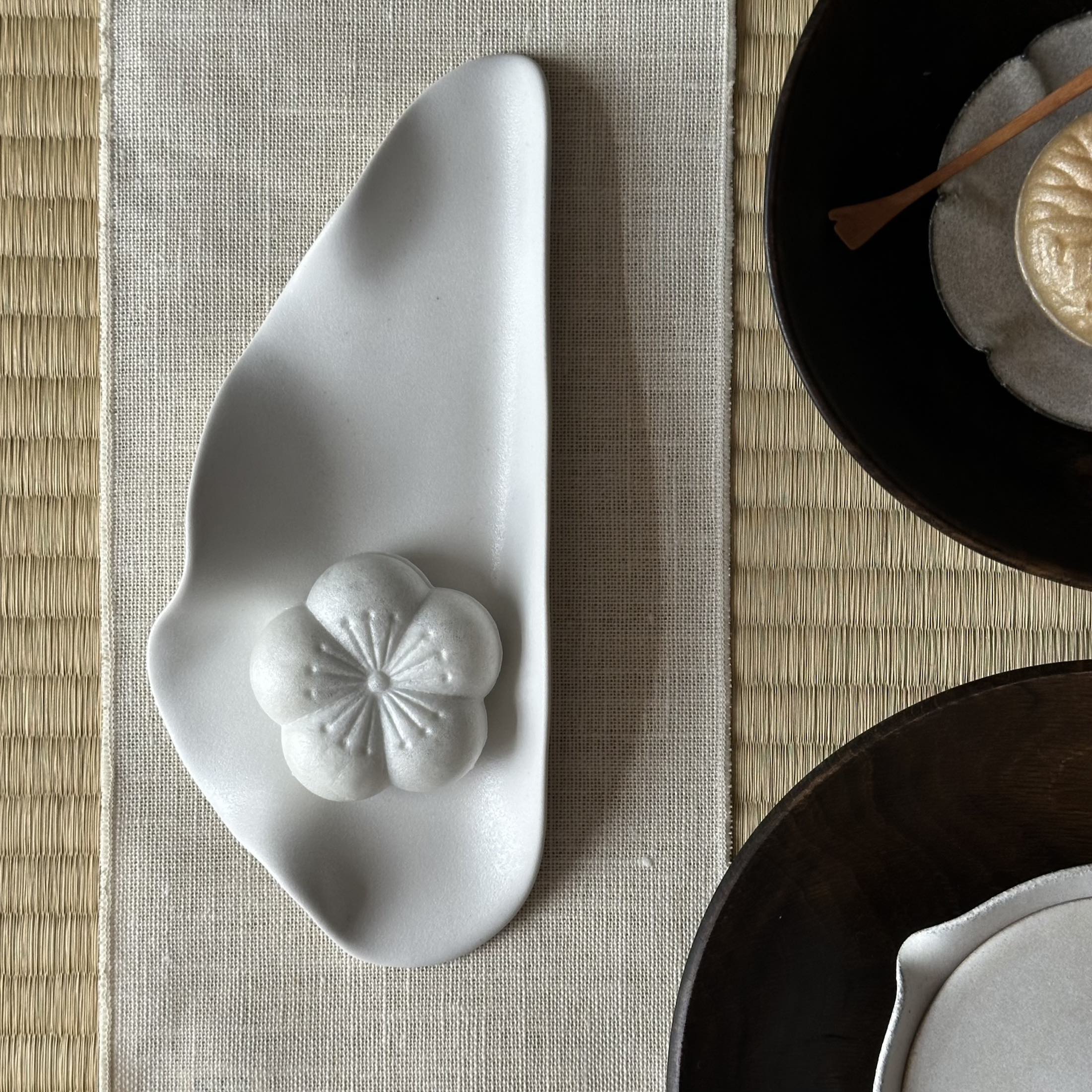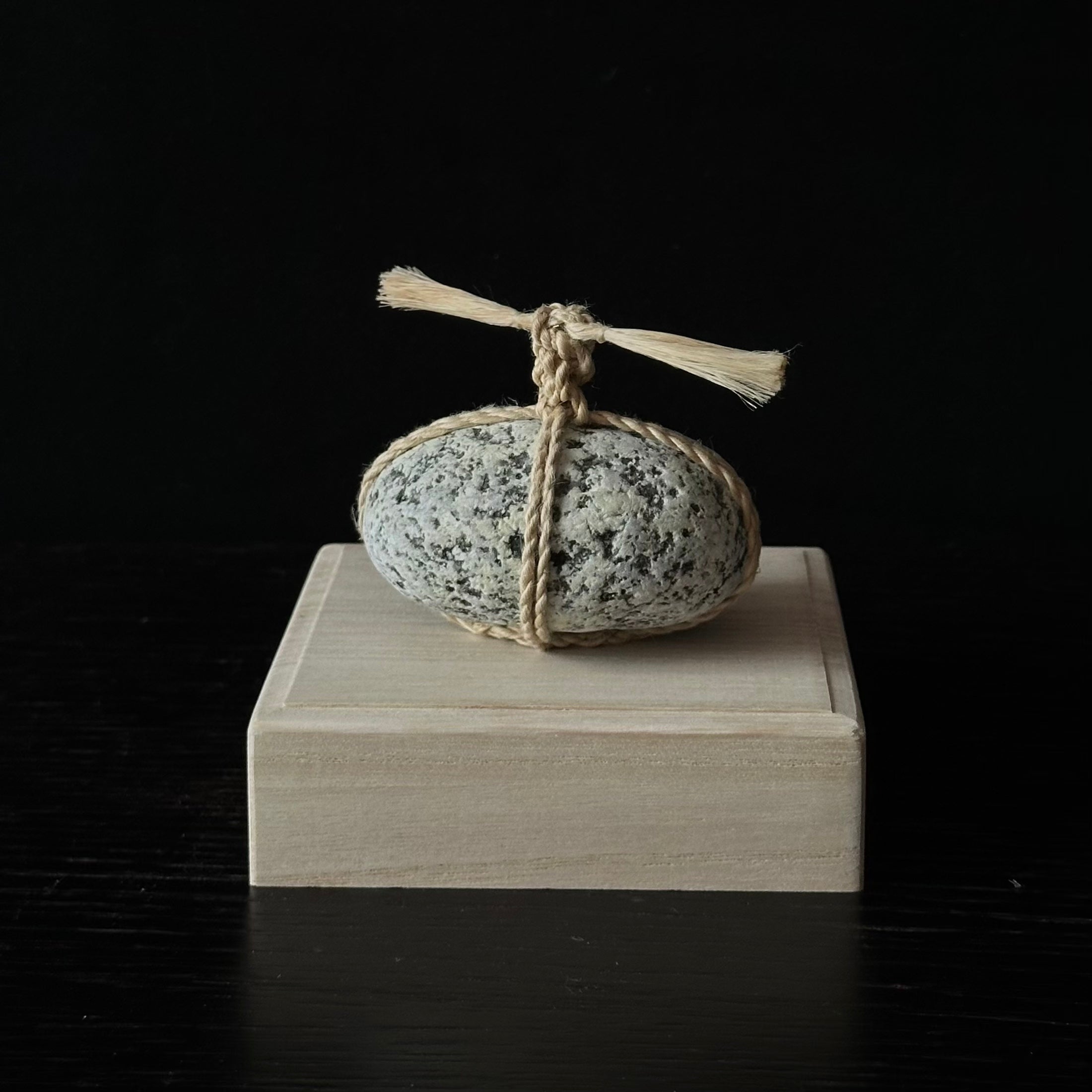
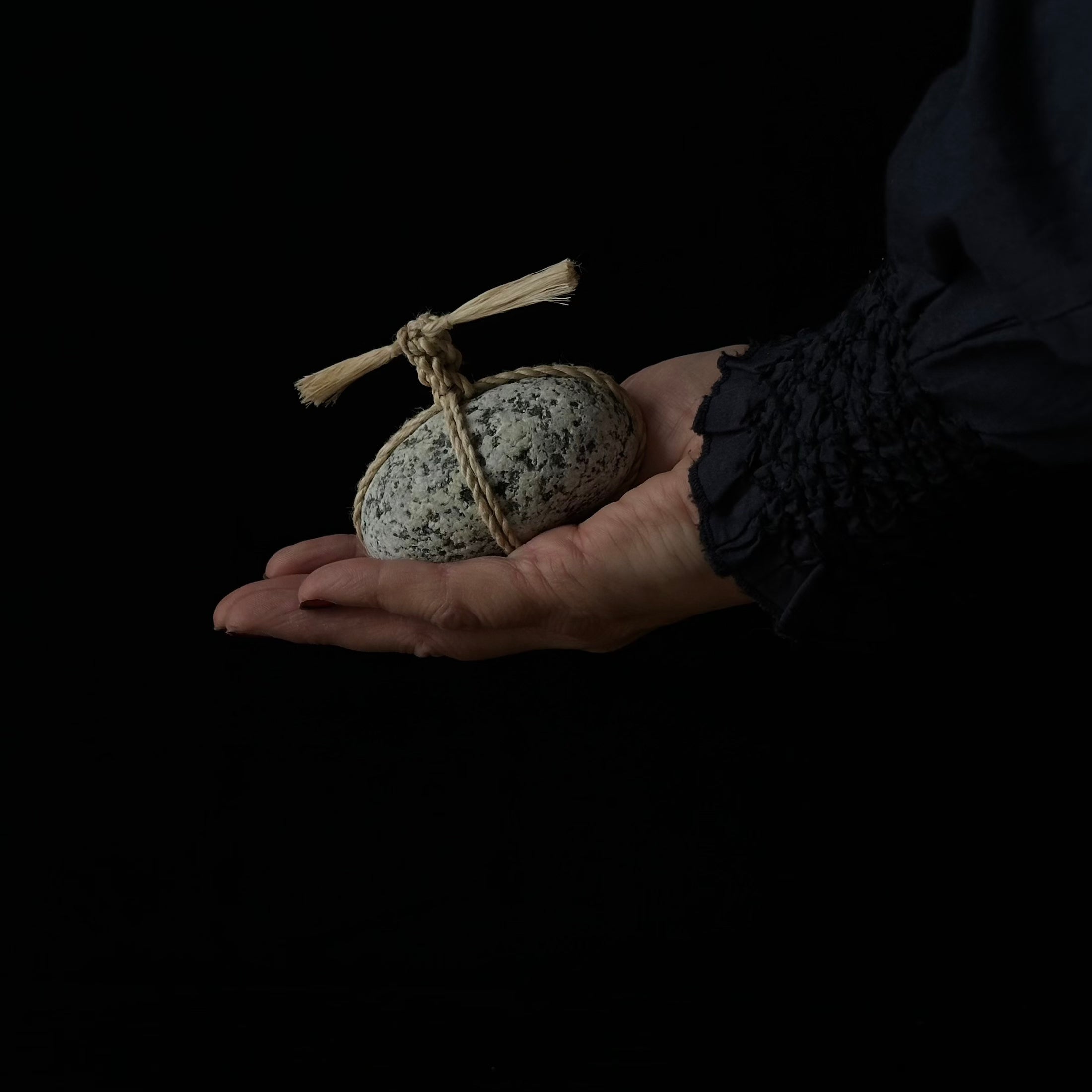
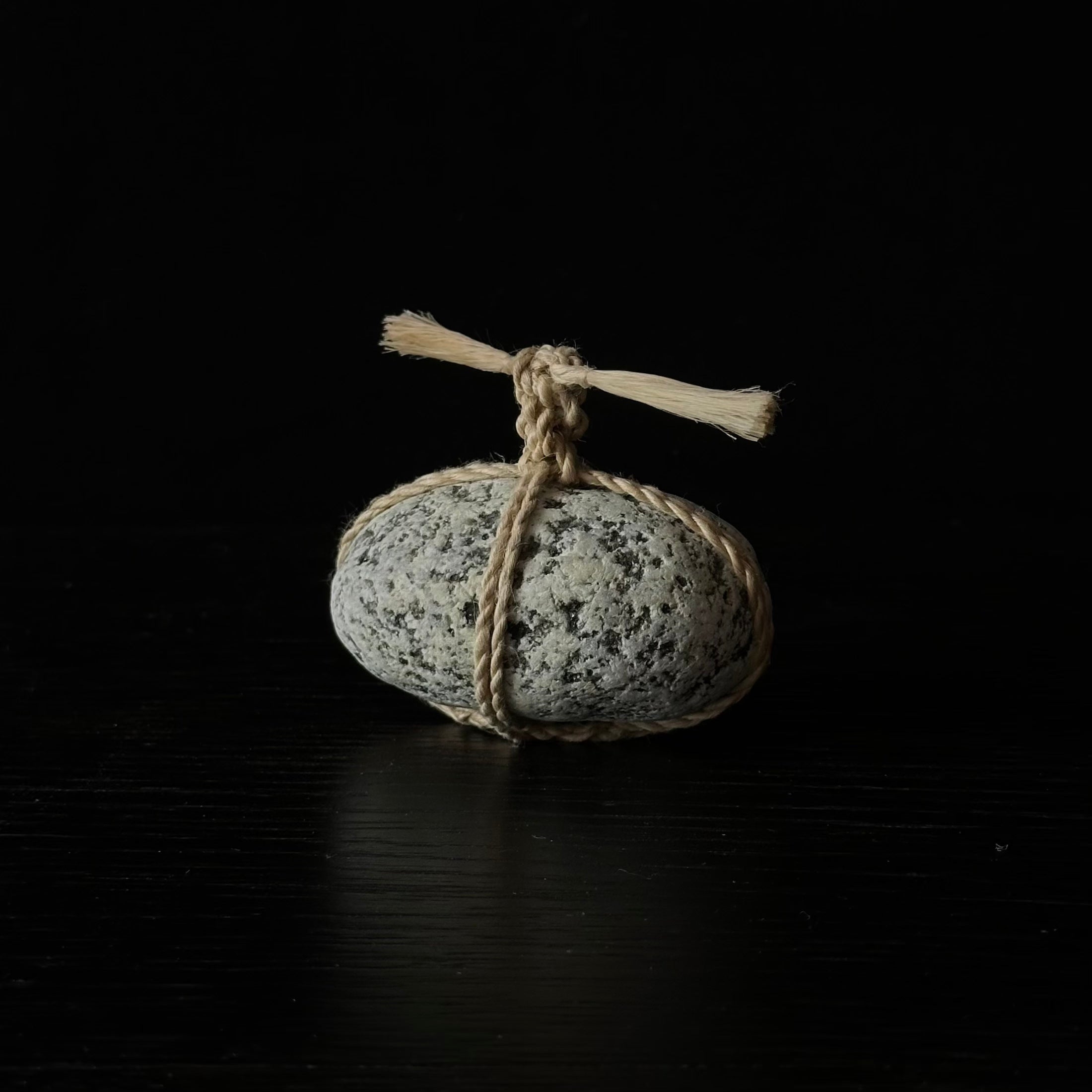
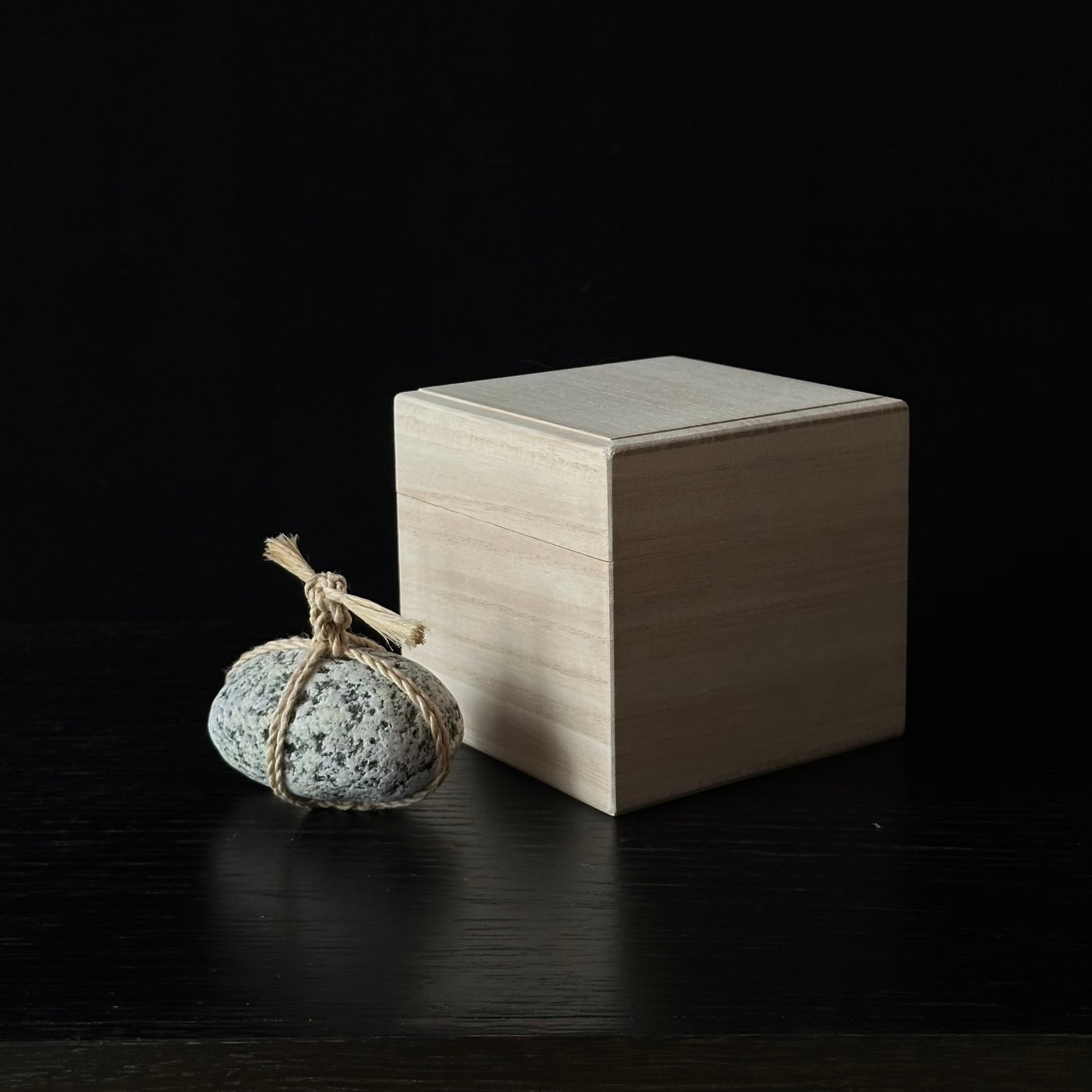
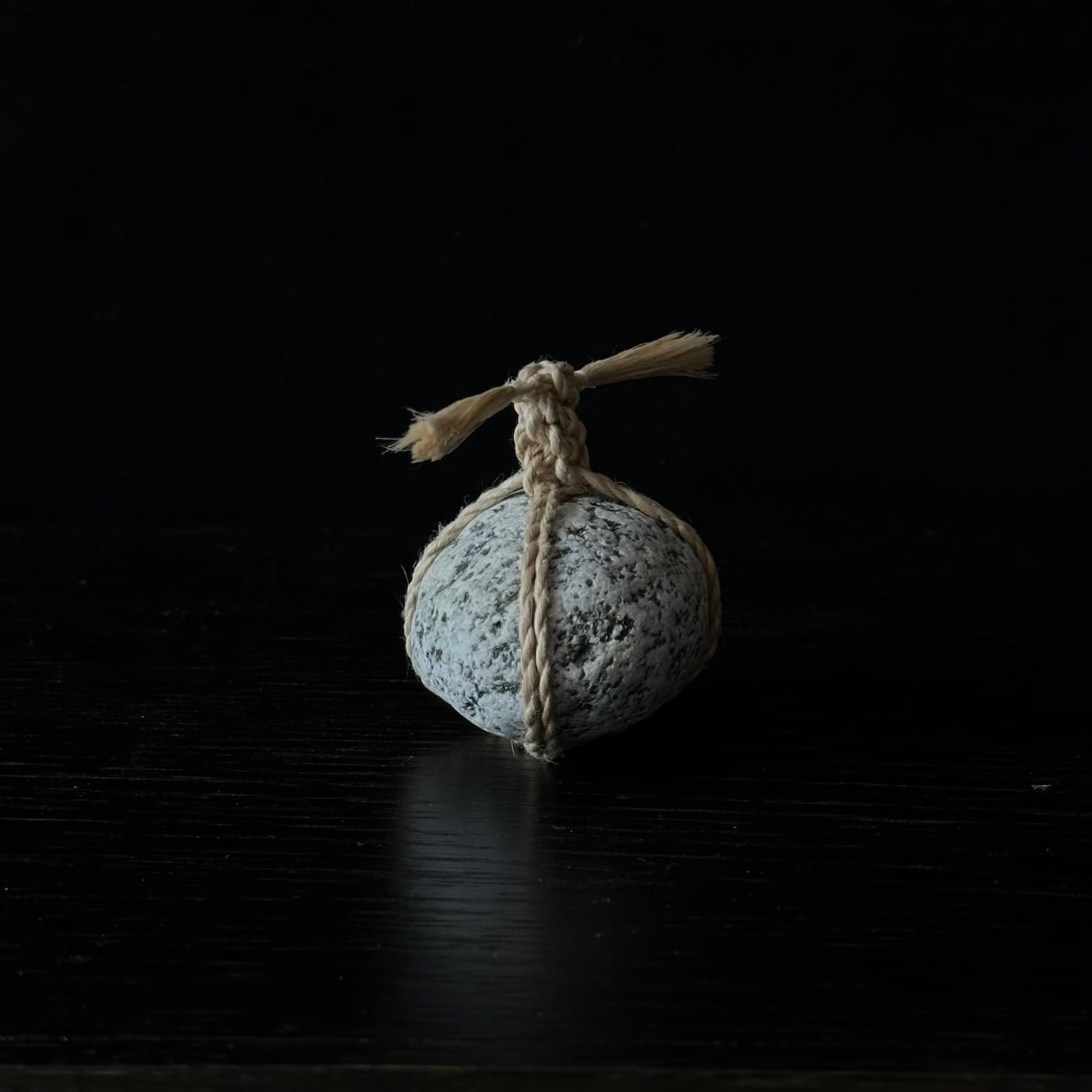
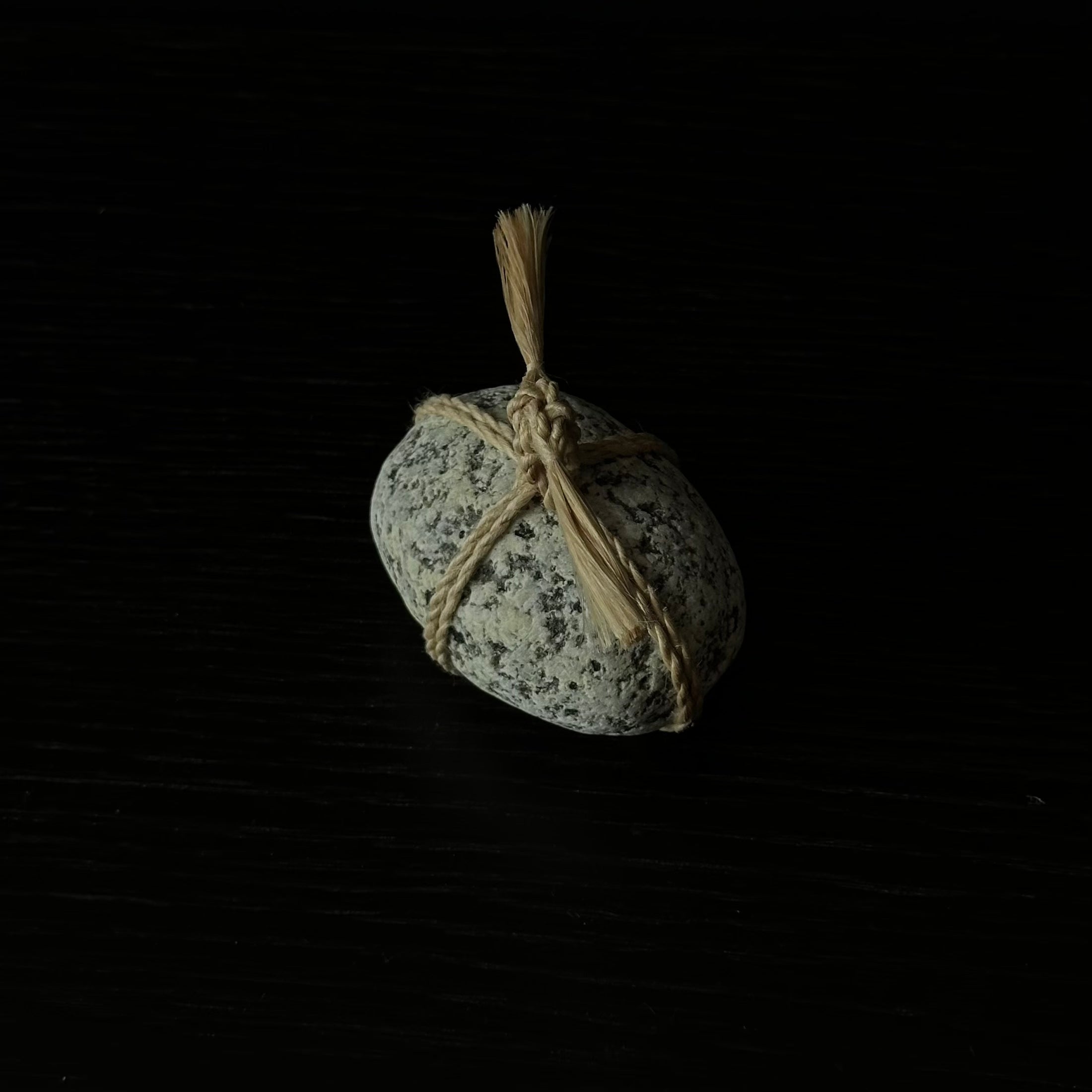
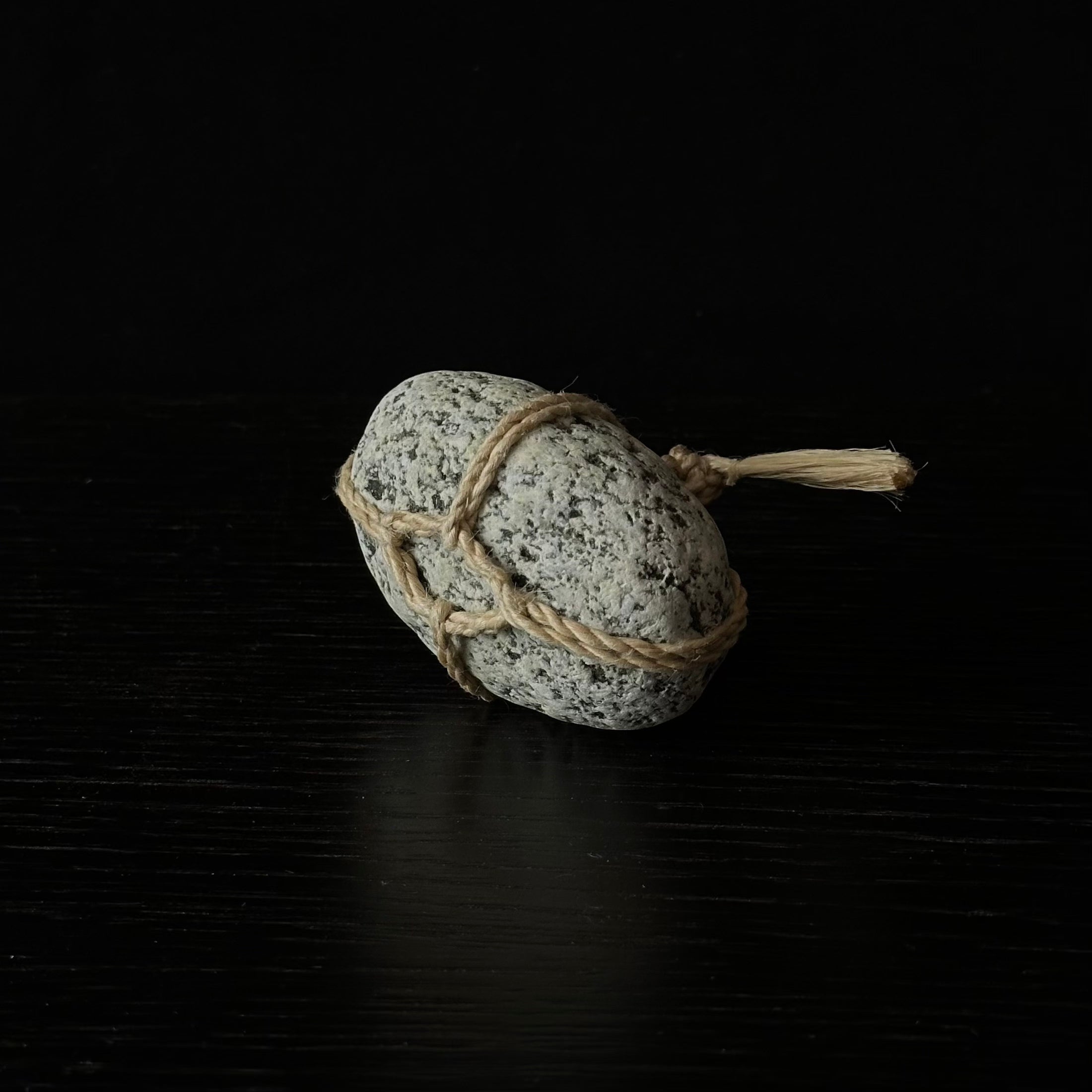
Sekimori #10, stone and purified hemp rope (seima)
The sekimori-ishi, or guardian stone, originated in Japanese tea gardens during the time of Sen no Rikyū, the founding master of the tea ceremony, in the 16th century. Placed at the entrance to a space, it invites one to pause before crossing the threshold, a gesture of restraint and respect. This sekimori of Eri (WARA), with its polished stone and purified hemp rope (seima), embodies ma (interval) and yohaku (beauty of emptiness), two essential notions of Japanese aesthetics evoking the space between things, the silence that gives meaning to presence. In a cherished place, this stone becomes a beacon of calm, a breath of fresh air in the everyday.
The artist
Eri lives and works in Shizuoka Prefecture. In 2020, moved by the meditative dimension of contact with rice straw, she began weaving ropes inspired by shimenawa, the sacred ropes of Shinto shrines marking the boundary between the sacred and the ordinary, and founded her brand, WARA. Her work explores the link between material, ritual, and interiority, in an approach where each gesture becomes an act of consciousness. Through the braiding of shimenawa and the creation of sekimori, she weaves a dialogue between past and present, extending an aesthetic of ma and yohaku, where beauty is born from silence, emptiness, and the precision of gesture.
The technique and the decor
The stone, chosen by Eri on the Shizuoka coastline, was selected for the balance of its shape and the smoothness of its surface, naturally polished by the sea. It is surrounded by a seima (purified hemp) rope, braided entirely by hand using the same technique as the shimenawa of Shinto shrines. The seima, obtained from carefully cleaned and combed hemp bark, reveals fine, lustrous fibers, reserved since antiquity for the most solemn Shinto rituals. Its silky texture and light hue give the stone a presence of great elegance, both taut and serene. This sekimori is a unique piece, the stone having been chosen for its singularity and the braiding bearing the mark of the artist's gesture.
Practical information
Place of Creation: Shizuoka Prefecture, Japan
Size: Medium (see image with hand for scale)
Dimensions (including rope): Length 11 cm - Width 7.5 cm - Height 6.5 cm
Weight (without box): 258 gr
Materials: natural stone, seima rope (purified hemp)
Period: contemporary
This Sekimori is presented in a protective paulownia wood box, the lid of which can be used as a presentation base, accompanied by a booklet in Japanese describing the artist's intention (a translation of which will be communicated).
Origin and symbolism
The sekimori-ishi, or tome-ishi, is a stone in Japanese gardens surrounded by a braided rope that invites one to go no further. Neither barrier nor obstacle, it marks the boundary of a space to be preserved. This highly subtle gesture extends the tradition of shimenawa, sacred Shinto ropes demarcating places inhabited by the divine: the stone thus becomes a spiritual threshold, a point of attention in the landscape.
The use of sekimori-ishi dates back to the 16th century, during the time of Sen no Rikyū, in tea gardens called roji ("dew path"). Placed at certain junctions, the stone surrounded by a braided rope gently and restrainedly indicated the boundary of an area not to be crossed. The tome-ishi, its close relative, was used in temples to indicate a closed or reserved area.
These stones express the Japanese philosophy of the threshold: marking the limit without constraining, preserving the tranquility of a place by the mere presence of a sign. If you would like to know more about sekimori and the work of Eri / WARA, you can read our dedicated article > .
DELIVERY
Delivery
Free delivery in mainland France for purchases over €200. Orders are generally dispatched within 2 working days, except in special cases, as indicated in the banner at the top of the website.
Living items (for items priced at €70 or more) are wrapped in beautiful fabric tied using the precious Korean art of pojagi. Some exceptions apply, particularly if the items are large. Learn more >
Detailed delivery information is available via this link >
Your invoice will be sent by email
Payment methods
By card (Stripe operator): Visa, MasterCard, Discover, American Express.
Secure card payment with 3D Secure.
By PayPal, Apple Pay, Google Pay and Shop Pay
Returns and exchanges
14 days to change your mind.
CARE INSTRUCTIONS
Sekimori stone: Remove dust with a very soft cloth to avoid scratches. Always handle the stone by the stone and not by the rope, never pull on the knot, let it air dry if the rope is wet. For hemp models, the fibers can sometimes shift: simply realign them by gently rolling the rope between your fingers to realign them.
Paulownia wood box: Avoid contact with water. Since the box is unvarnished, it will stain if wet. Do not store it in a hot or humid place. Sudden temperature changes may cause the wood to discolor to brown tones. Store it in stable conditions.
Choose options







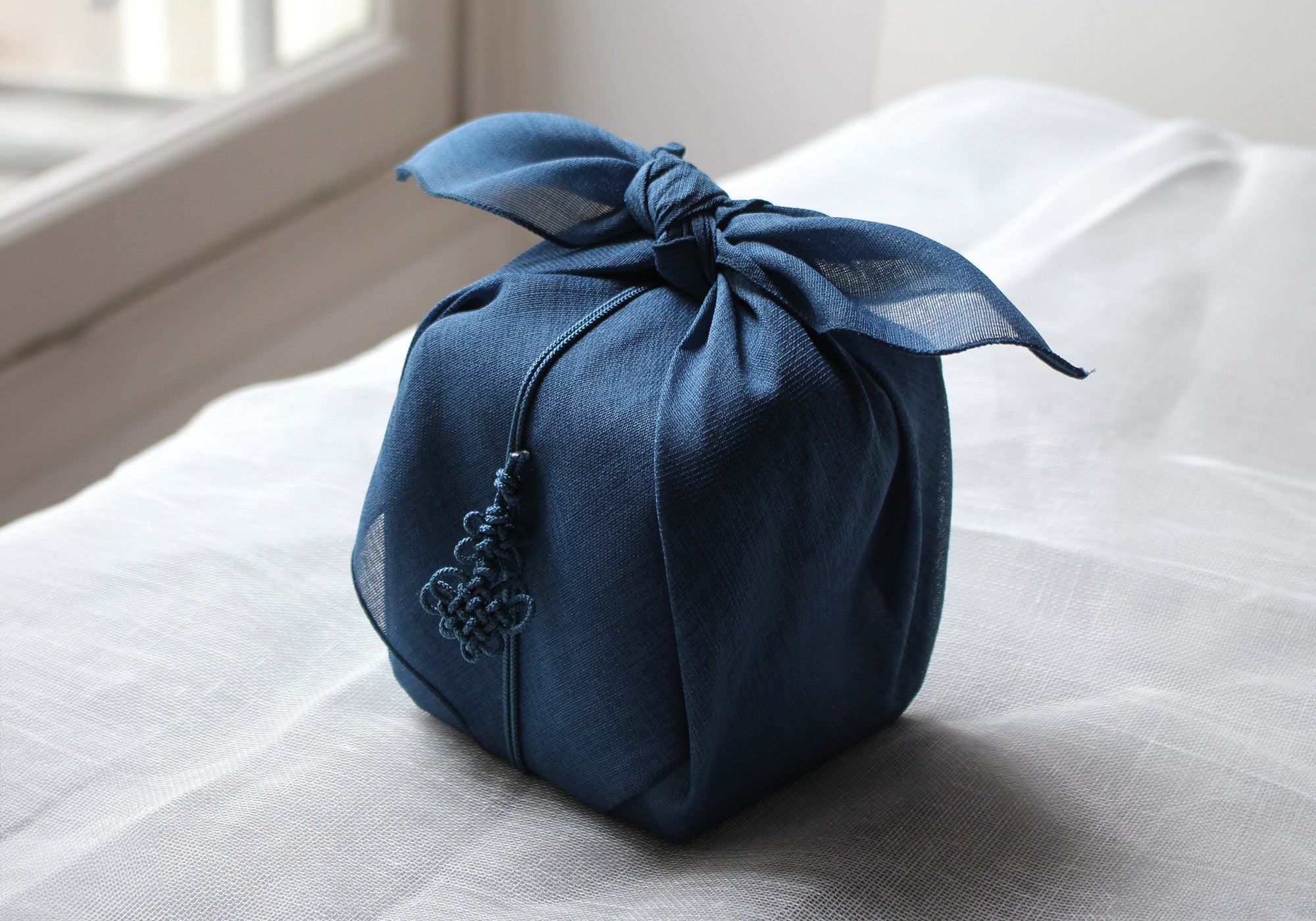
The art of packaging
Living items are wrapped in beautiful fabric tied using the little-known Korean art of pojagi. Exceptions apply: Details and conditions >


